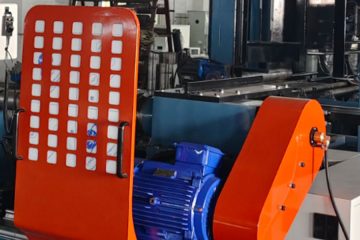Tungsten carbide or tungsten carbide (WC), also known as “Widia”, from the German “wie diamant” (as in diamond), is one of the hardest carbon-based compounds. The color is usually gray, and tungsten carbide powder can be sintered and pressed into jewelry, cutting tools, construction machinery parts, or special coatings for various high-demand parts. So what is tungsten carbide material? What are the properties and how hard is it? What are the advantages and disadvantages of tungsten carbide spraying? The following editor will explain the basic knowledge of tungsten carbide materials in detail.
What Is Tungsten Carbide?

Tungsten carbide is the name used for a broad class of alloys consisting of actual tungsten carbide with a metal binder and other added carbides (ie TiC and TaC). The two most common metal binders are cobalt and nickel. Metal binders affect hardness, toughness, and chemical compatibility. Depending on the desired properties, the metal binder content may vary between 3-20% of the finished material.
Machining tungsten alloy and carbide is a very versatile material that can be alloyed to obtain various properties. Its extraordinary hardness can be used to shape and cut almost any other material, and its high temperature resistance allows it to work at high speeds, maximizing its value as a cutting tool. For this reason it is increasingly used for work, in addition to the typical materials of very high hardness, among various steel alloys, from the most conventional, due to their properties, to the most corrosion-resistant materials. For example manganese steel or tool steel. Another application for the use of tungsten carbide due to its reduced ductility and high mechanical resistance is in the coating of parts that are subject to continuous friction and must have high wear resistance, such as bearings or rotating elements, where it is applied using thermal projection Coating form for systems such as HVOF.
The Hardness Of Tungsten Carbide

As one of the hardest materials, according to the Mohs hardness, the hardness of tungsten carbide is between 8.5 and 9.5, which is surpassed only by very few materials such as diamond. This material is born from the bond between carbon and tungsten, doped with a small amount of cobalt, and through sintering, it forms one of the so-called CERMET (CERamic METal), considered one of the most durable and durable compounds in the industry.
Tungsten carbide is made by sintering metal powder under 1000 atmospheric pressure, using cobalt powder as a binder, and the hardness of cobalt is also very high. The hardness of tungsten carbide is extremely high, and it is usually made into a cutting tool, which can cut stainless steel, drill bits or bullet cores of armor-piercing projectiles. Its Vickers hardness can be as high as 1800 HV, which is the hardest material at that time. The hardness of tungsten carbide is basically equivalent to that of sapphire.
Tungsten carbide brings real hardness, which is different from the high hardness brought by titanium alloy or other metals through surface hardening technology. Tungsten carbide has the same hardness inside and outside. And because of the high hardness, the brightness brought by polishing is outstanding.
The Uses Of Tungsten Carbide
Tungsten carbide is used in many industries due to its excellent hardness properties compared to tool steels and excellent toughness compared to technical ceramics. Given these remarkable properties, tungsten carbide is most often associated with tools used in metal cutting applications such as sawing, milling, and turning. Many people are surprised to learn that tungsten carbide is also often used in fluid distribution or flow applications due to its excellent service life when exposed to aggressive wear. Tungsten carbide’s improved wear resistance extends the life of components such as nozzles in industries such as waterjet cutting, oil and gas, and electronics.
Advantages And Disadvantages Of Tungsten Carbide Spraying
The advantages of tungsten carbide spraying: good thermal stability, good wear resistance, excellent impact resistance, and good processability.
Disadvantages of tungsten carbide spraying: high cost and high construction environment requirements.
Advantages of supersonic spraying tungsten carbide coating:
- 1. Higher speed. The speed of sound of supersonic spraying tungsten carbide is about five times that of ordinary sound speed, so the processing effect is better, and there is no need to worry about processing efficiency. In the process of spraying, the speed of the powder can also be rapidly increased, so that the density and strength of its spraying can be effectively protected, and there is no need to worry about the use effect.
- 2. Stronger combination. Because the process of supersonic spraying tungsten carbide is special and the coating is highly dense, it can also effectively reduce the porosity, which can ensure the excellent performance of its surface. Moreover, the bonding strength of this processing technology is also very high, so the quality of the products produced by carbide machining is better, and it is more worthy of choice.
- 3. The workpiece is not deformed. Supersonic spraying of tungsten carbide can effectively ensure that the workpiece does not deform during high-speed operation, and the practicability can also be guaranteed.


